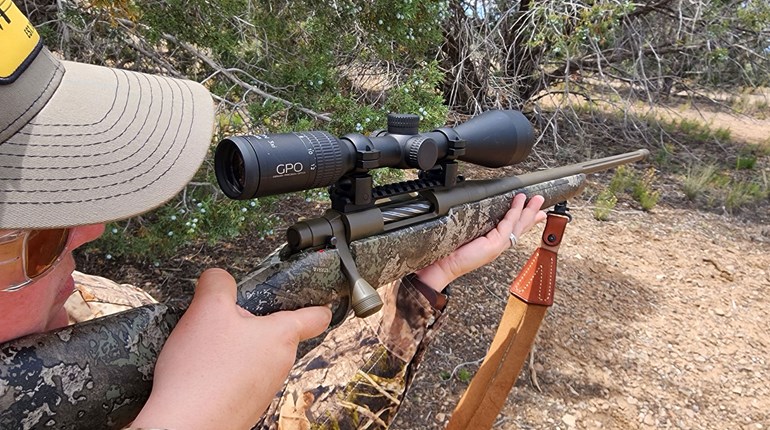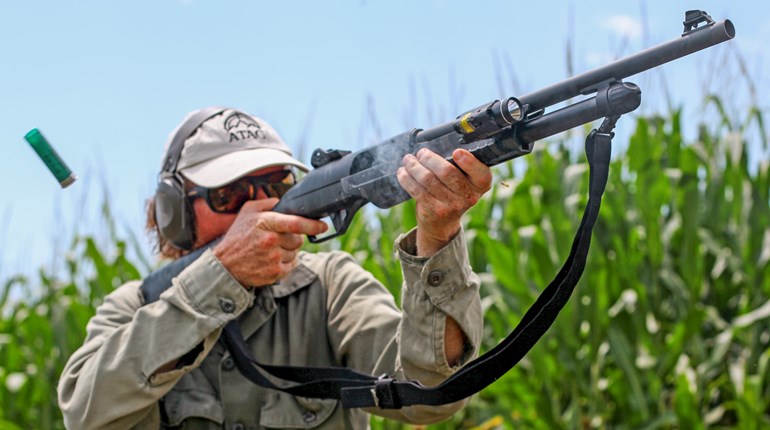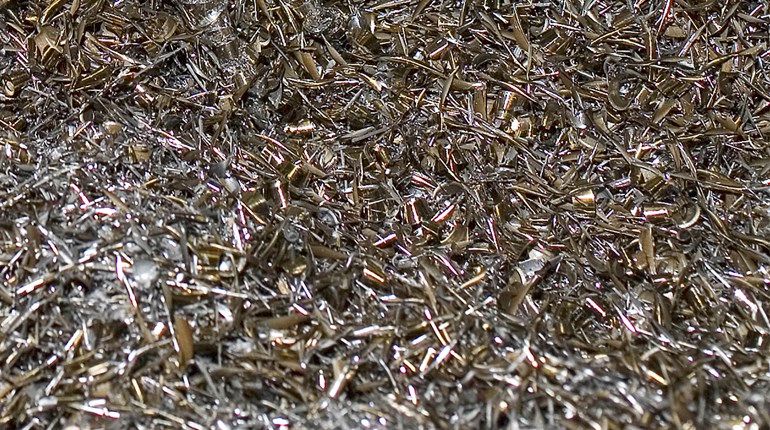
I was standing in the food line at a dinner party patiently waiting for the gentleman ahead of me to stop shoveling macaroni salad onto his Dixie plate when a voice behind me said, “So you’re the guy who hunts, right?” I turned, smiled, and told her that I did hunt. As I moved past the macaroni salad (can’t stand the stuff) and on to the potatoes au gratin she started again, this time more aggressively.

“So how is it that you justify killing animals?”
Oh man, I thought. I just wanted some potatoes.
I suspect the lady expected an emotionally charged response. Perhaps she wanted to see me squirm or shrug in embarrassment. Had she not, after all, outed me as a hunter? Had she not laid bare my social sin for all to hear?
My response was relatively cool. After all, I could she that she was coming at this topic from a place of deep emotion. More importantly, I had facts on my side. Lots of them.
The truth doesn’t always win an argument, but the reality is that most anti-hunters are simply ignorant of the truths of hunting. Perhaps they’ll never come to terms with taking the life of an animal, but perhaps they can accept the reality that regulated hunting can–and does–support and protect wildlife.
I laid out the facts for the woman behind me in the food line. To her credit, she listened. She even admitted that she wasn’t aware of much of what I told her. She could never go hunting, she told me, but she did admit she understood the benefits of regulated hunting.
Truth, facts, and reality won’t always win an argument. But there are some important truths that might at least give anti-hunters pause. If you ever find yourself in a food line, at the grocery, a youth sporting event, or anywhere else where someone approaches and asks why you hunt here are five important facts they should know.

1. Regulated hunting has proven to be an effective management tool
The North American Model of Conservation is a list of principles used to manage wildlife resources in the United States and Canada, and hunting plays a vital role in this model. In the early 1900s pioneering conservationists like Theordore Roosevelt understood the imperative to protect and preserve wild game populations as a shared resource, and critical pieces of legislation like the Migratory Bird Act of 1918 and the Federal Aid in Wildlife Restoration Act of 1937 (an excise tax on firearms, ammunition and archery equipment more commonly referred to as the Pittman-Robertson Act) helped lay the groundwork for the North American Model of Conservation. The model lists seven key tenets that provide the framework for modern conservation which state that wildlife is a public resource that can only be harvested for a legitimate resource based on sound scientific data. The North American Model of Conservation also ended market hunting, a practice responsible for the reduction or elimination (as is the case with the passenger pigeon) of wildlife populations.
Funding for these conservation efforts come via hunters in the form of Pittman-Robertson taxes and revenue generated by the purchase of hunting licenses and tags. The North American Model has been extraordinarily successful, too. Elk populations were as low as 41,000 in 1907, but today there are an estimated 1.1 million elk in North America. Whitetail deer populations have rebounded from an estimated 500,000 animals in 1900 to over 30 million today, and wild turkey populations, which were as low as 100,000 in 1900, stand at over 6 million. Waterfowl populations which were decimated by unregulated sport hunting in the early twentieth century have rebounded to over 32 million birds. All of this data supports the notion that the North American Model of Conservation is an effective tool for wildlife conservation funded primarily by hunter dollars.

2. Hunting helps support local economies
According to data from the Sportsman’s Alliance, hunters spent roughly $45.2 billion on equipment, licenses, and other goods in 2022 and created over 540,000 jobs with salaries and wages of $33.5 billion. Hunter generated state taxes were estimated at $5.6 billion and federal tax revenue exceeded $8 billion, almost all of which was directed back into vital conservation efforts. Sport hunting boosted the GDP by over $56 billion in 2022 alone.
This data is crucial because it illustrates how funds generated by hunters improve the lives of people, many of whom live in rural areas with fewer job opportunities than more urban districts. By supporting over a half-million jobs hunting provides income for many Americans whether they hunt themselves or not. It’s important to note that hunter funds do not strictly support wildlife but also people.
This system of revenue generation and job creation is not strictly limited to the United States, either. In communal areas like Namibia’s Communal Conservancies or Zimbabwe’s CAMPFIRE areas hunter funding supports local communities directly, and it provides these poor rural populations with a renewable, reliable source of income. Research published in Science Direct found that an estimated 64.3 percent of rural communities in Namibia benefitted from hunter dollars, and that same study estimated that in 2016 international hunters contributed $341 million US to the South African economy and created 17,000 jobs, which is particularly relevant in a country where the unemployment rate is over 33 percent. By creating new jobs hunting reduces the need for rural people around the world to poach to earn a living.

3. Hunting pays for wildlife law enforcement, conservation initiatives, and research projects
As a former biologist I can attest to the fact that funding for field research is often limited. Better data allows wildlife agencies to make more impactful decisions when managing wildlife, so field research is essential to conservation efforts. Not surprisingly, hunter funds pay for many essential projects that help wildlife agencies make informed decisions.
Much of this funding is generated by the purchase of hunting licenses and tags. These funds help pay the salaries of wildlife law enforcement officers, pay for habitat restoration equipment like tractors, mowers, and plows, and provide funds to purchase and maintain state parks and wildlife areas, and they also fund important conservation initiatives like grassland and wetland restoration. In my home state of Ohio alone, funding generated by hunting licenses supports research projects on whitetail deer, quail, grouse, wild turkey, and other game species as well as non-game animals like northern water snakes.
In addition to funding generated by license sales hunters contribute to wildlife conservation and research through organizations like the Rocky Mountain Elk Foundation, Cabela Family Foundation, Ducks Unlimited, Pheasants Forever, and a range of other non-profits. Ducks Unlimited, for example, provided $2.1 million to study the impacts of harmful algal blooms in 2021, the results of which will help biologists better manage and control algal blooms that pose a risk to a broad range of aquatic species. The Rocky Mountain Elk Foundation has teamed up with the University of Montana to establish the Center for Hunting and Conservation with the goal of advancing education, research, and outreach to improve conservation efforts and outcomes. These are just two of the important projects that are being funded directly by hunter dollars.

4. Hunting protects vital habitat
Quality habitat is the foundation for healthy ecosystems, and projects that protect and restore habitat preserve game and non-game animals alike. Not surprisingly, hunters and hunter-funded organizations protect millions of critical acres each year. Ducks Unlimited alone has preserved or enhanced over 19 million acres of habitat in North America, much of it critical nesting habitat for waterfowl. RMEF has protected or improved over 9 million acres of habitat, and the National Wild Turkey Federation has done the same with 23 million acres over the life of the organization.
Preserving and improving wildlife habitat is crucial to the continued survival of thousands of species, so while the millions of acres listed above do protect popular game animals they also provide a home for plants, amphibians, reptiles, and other species. Hunting also protects vital habitat around the world. In Mozambique’s Zambeze Delta, for example, hunter funding has helped restore millions of acres of land that was badly damaged during that country’s prolonged civil war. Big game animals in the delta have rebounded remarkably, but the region is now home to several endangered non-game species like the pangolin. The pangolin (or scaly anteater) is the most trafficked animal on earth, primarily because of its use in traditional medicine. In many areas of Africa pangolins have been poached to extinction, but they are thriving in the delta thanks to millions of acres of suitable habitat and hunter-funded anti-poaching efforts.

5. Hunting provides a source of lean, healthy protein to people around the world
As Americans we’re fortunate to have access to fresh meat at the local market, but that’s not the case everywhere in the world. In poorer nations meat is a luxury, and in many areas this has led to a burgeoning black market for bush meat. If you’ve ever strolled down the streets in large cities in many Asian or African nations you’ll find vendors selling a variety of meats, much of it obtained through legal poaching. To procure this meat, many poachers set up snares or other devices to kill anything that walks by. In rural Africa that might mean the poacher’s snare captures a bush rat or a cape buffalo.
Illegal bush meat trapping used to be an issue in Mozambique’s Zambeze Delta, but regulated hunting changed that. International hunters cannot bring home the meat from the animals they harvest, electing instead to take the hide and horns, which are of the least value to local people. The meat from harvested animals, though, is provided free of charge to local communities. In 2018 that amounted to over 30 tons of fresh, lean meat provided to villagers at no cost. On average, each family within the Zambeze Delta received 10 pounds of fresh meat each week throughout the year, and the local school (funded by–you guessed it–hunter dollars) was able to provide fresh, healthy meat to every school-aged child each day at no cost to families.
Hunters in the United States also support needy families by donating meat. Each year programs like Hunters for the Hungry provide millions of free meals to families. This lean meat comes from game animals that are never injected with hormones or antibiotics, which is the reason I feed my family primarily wild game. When I fill my freezer with elk, deer, or antelope meat I know how the animal was harvested and how the game was handled and prepared.






































